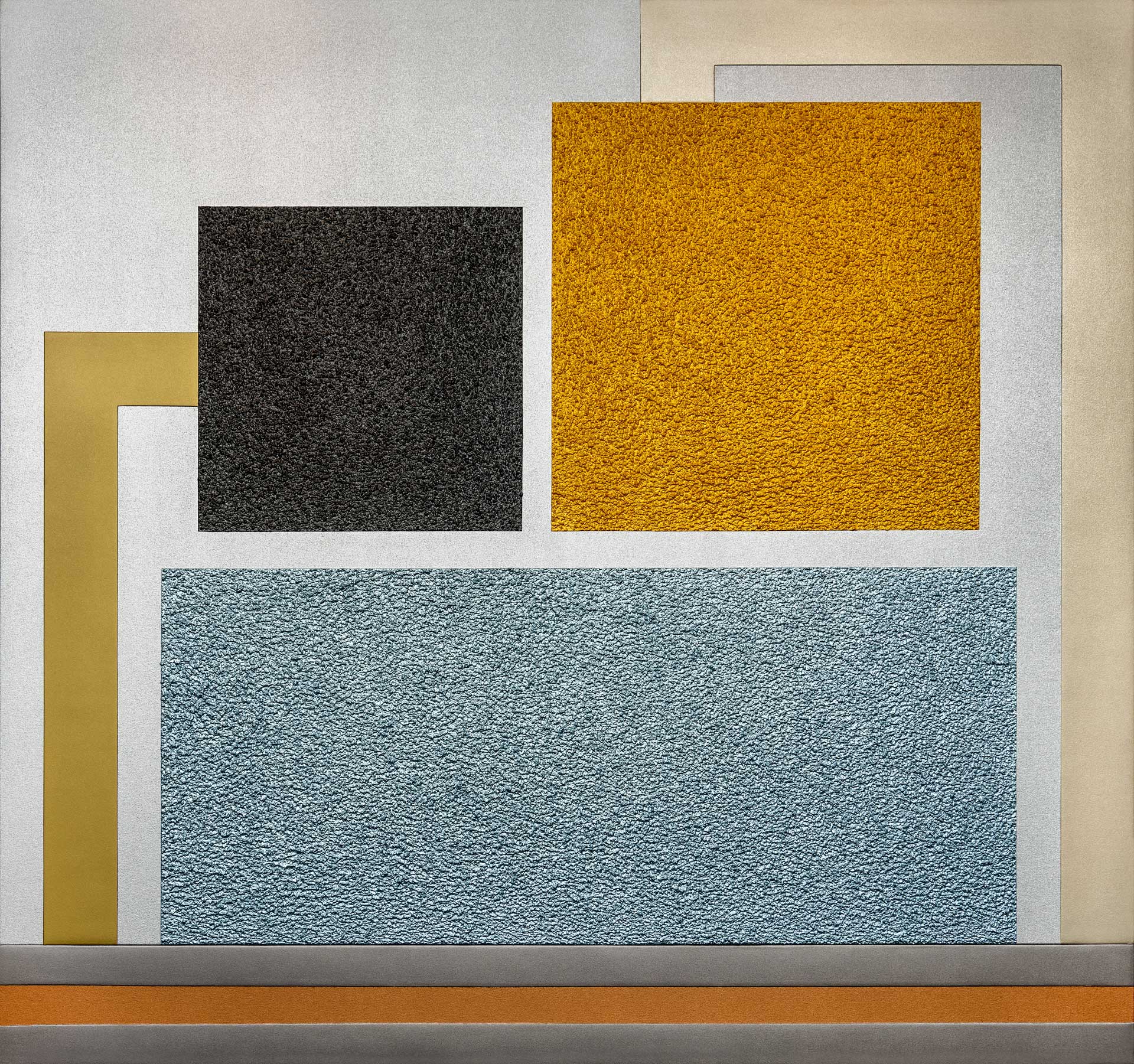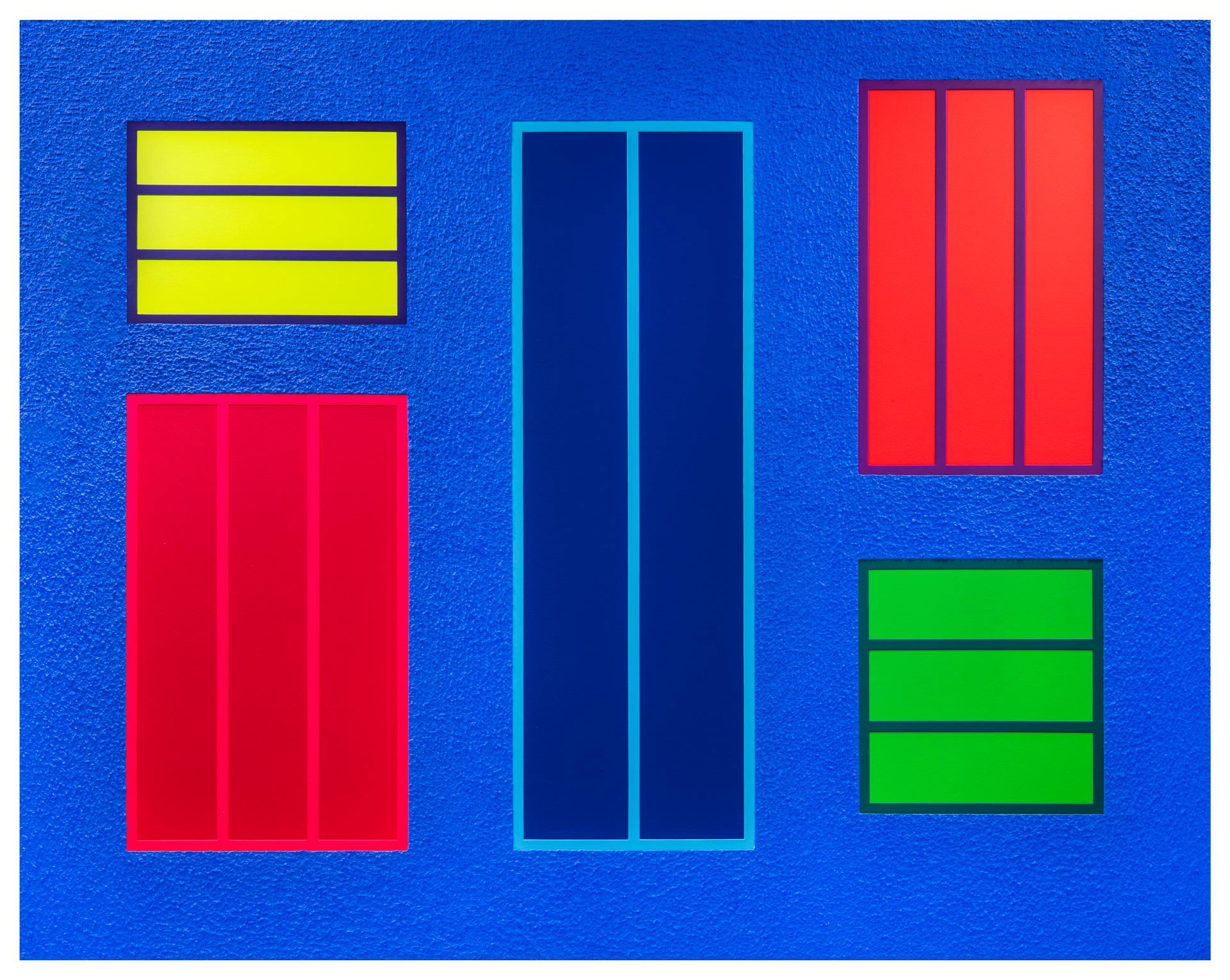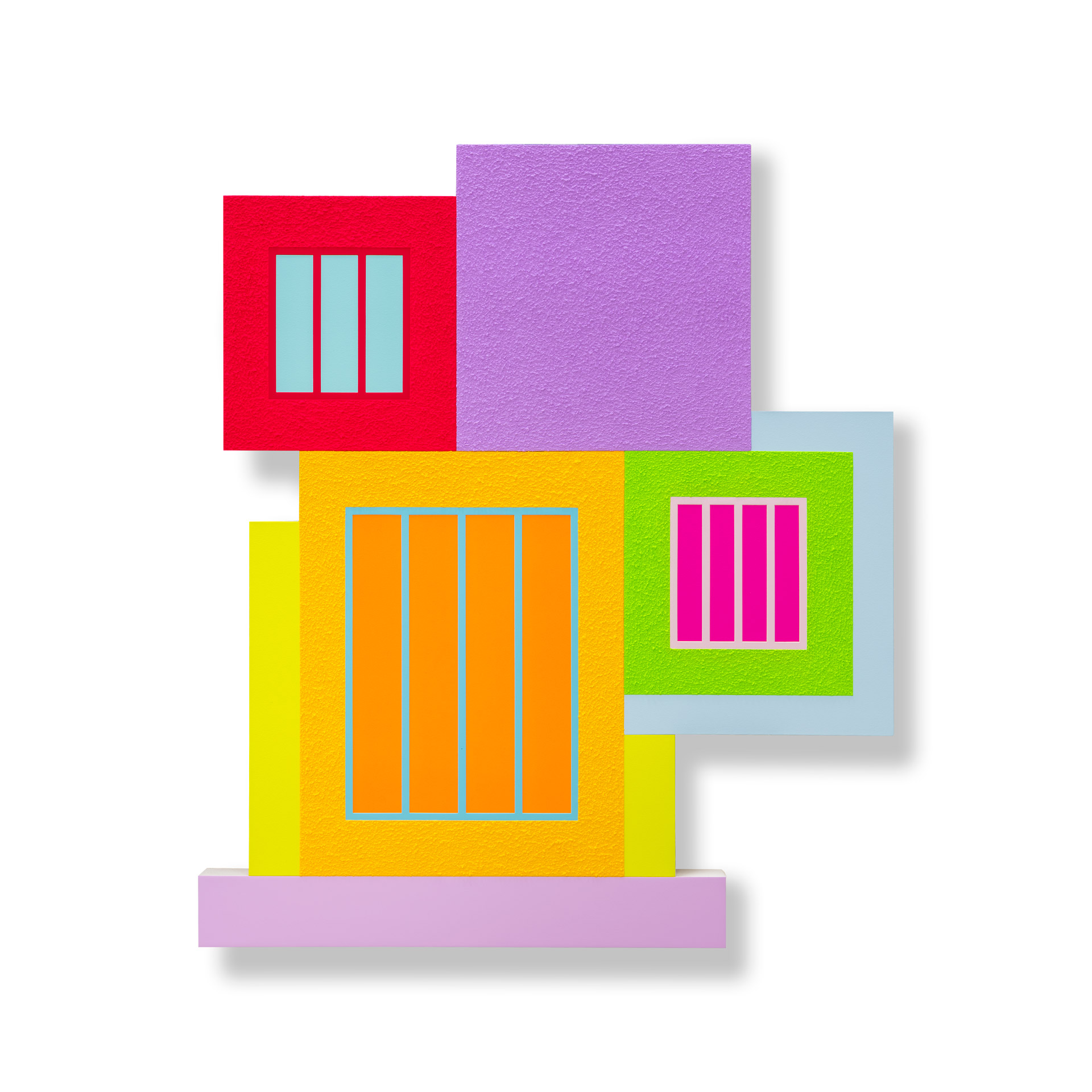Peter Halley is a graduate of Yale University. During the 1970s he started to produce his own work, exploring themes such as technology, communication and architecture.
In the 1980s, Halley exhibited his works in local art galleries and quickly became a prominent figure on the New York art scene. During this decade, he created a series of large-scale paintings with bright blocks of colour and black lines dividing the canvas into sections. These blocks were like cells that could be isolated or connected to each other. As Halley himself explains: “The cell is a reminder of the apartment house, the hospital bed, the school desk: the isolated endpoints of industrial structure.”1
In the 1990s, although Halley continued to address these subjects in his work, he began to incorporate materials such as acrylic and resin into his pieces. He also started to create installations in which visitors could enter and experience space in a completely new way. These are works that speak of alienation and isolation.
In recent years, Halley has continued creating works that explore the relationship between technology and society, while also beginning to explore themes such as identity and perception.
Halley’s work has been exhibited in some of the world’s most prestigious galleries and museums, including the Centre Georges Pompidou in Paris, the Guggenheim in New York and Tate Modern in London. His works are part of important collections, including those of the Museum of Modern Art in New York (MoMA), the Whitney Museum of American Art and the Hirshhorn Museum and Sculpture Garden in Washington, DC.
In addition to his work as an artist, Halley has also pursued intense activity as a teacher in several academic institutions around the world, including the University of California, Los Angeles, Columbia University in New York and Yale School of Art.
The Hortensia Herrero collection owns three works by this distinguished artist.


